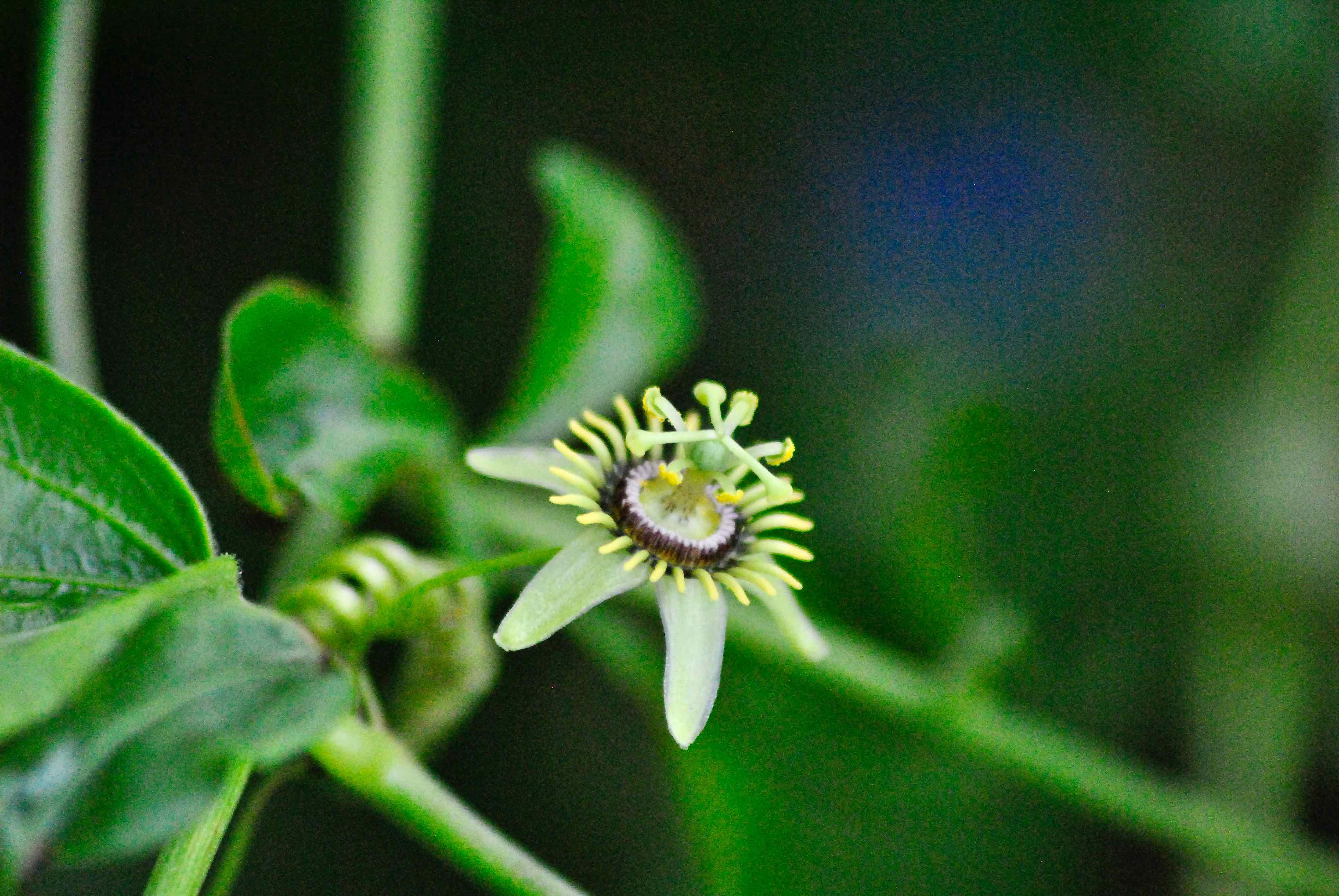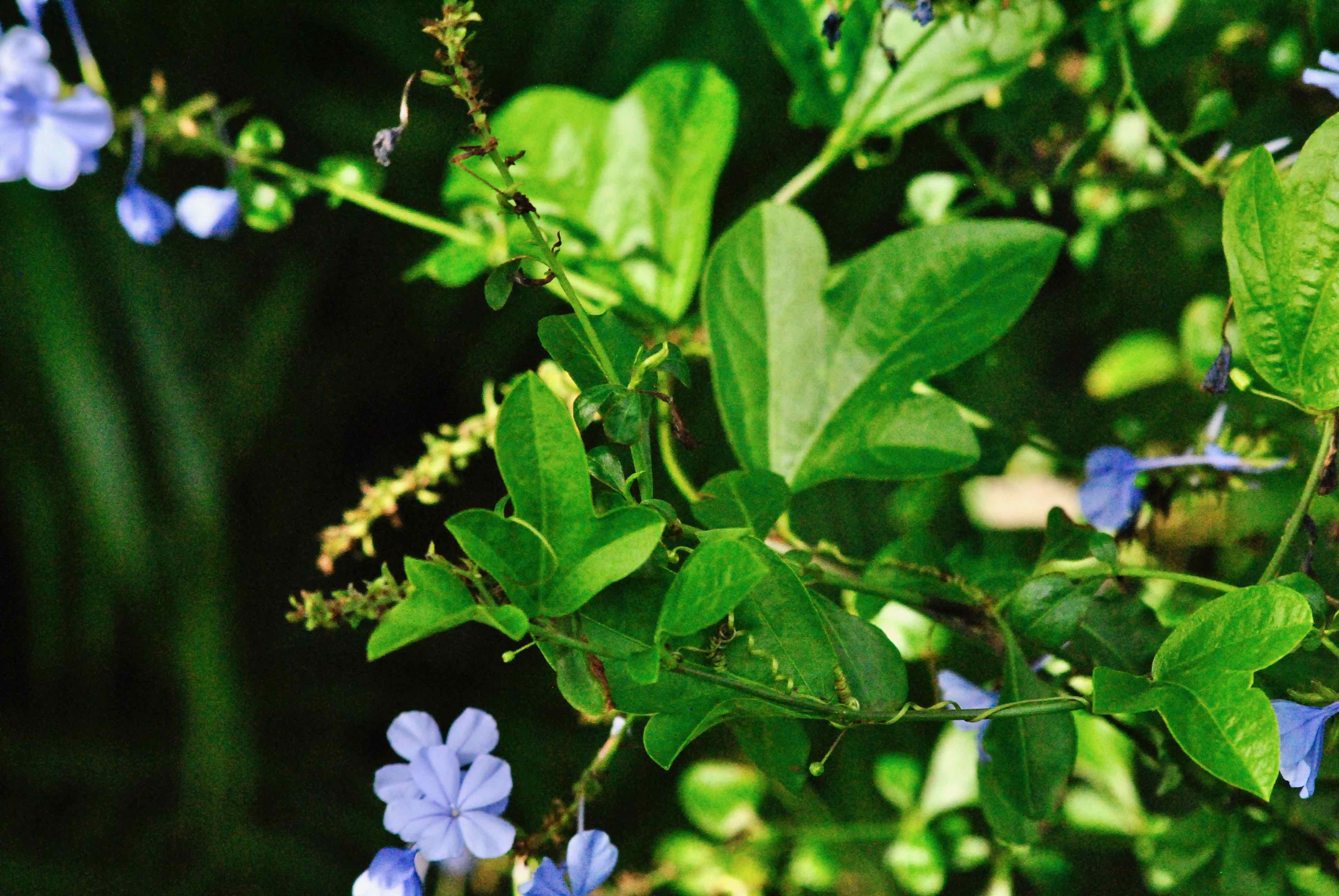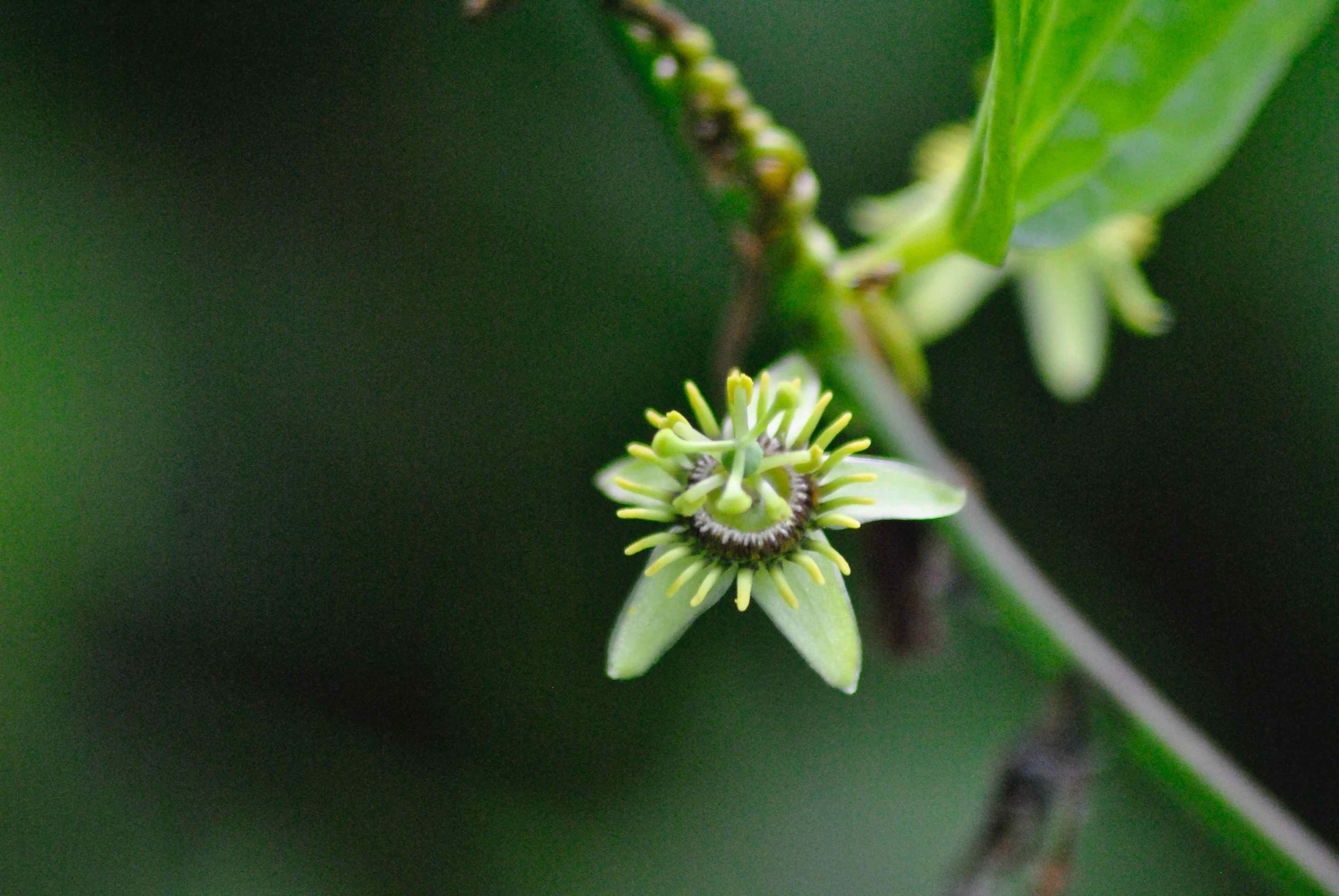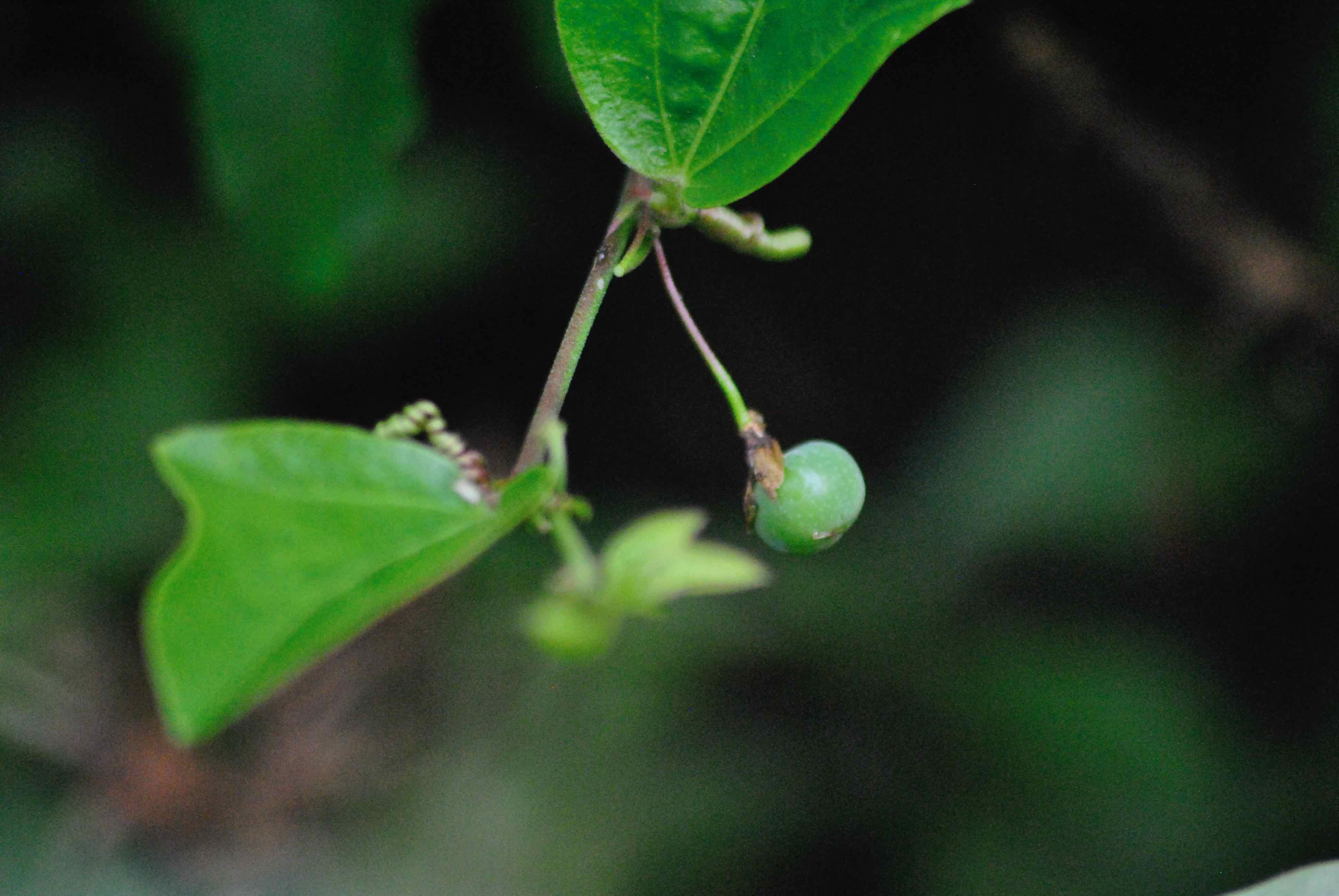
Corkystem Passionflower, photographed in western Delray Beach, Palm Beach County, in September 2015.
There are hundreds of passionflower species worldwide. Most are gorgeous beyond words. Corkystem passionflower, Passiflora suberosa, isn't one of them. In fact, it's got to rank among the plainest of the lot.
The flowers are greenish-yellow, lack petals and are absolutely tiny, maybe half the size of a dime, or less. Still, it's a favorite for a number of butterflies, and that makes it a favorite for butterfly gardeners.
It is, by most sources, a Florida native. The Institute for Regional Conservation and the authoritative Atlas of Florida Vascular Plants classify corkystem passionflower as native, but the U.S. Department of Agriculture's PLANTS database does not. Most sources also say it is a native of Texas (one population in the southern part of the state), the Caribbean, Mexico, Central America and South America. It has become a naturalized plant in warmer places around the globe, including the Pacific islands, Asia, Australia and Africa. In many of those places, including Hawaii, China and Australia, it is considered an invasive.
Corkystem passionflower is a vine that attaches itself to other plants by wrapping tendrils around their stems. The vines can grow to 15 feet or more and can be just as wide. As the stems get older, they take on a woody appearance, hence the name. The leaves generally are three-lobed and alternate along the stem. The fruit is a tiny, seed-filled purple-black berry that birds devour and disperse. It is edible but it doesn't taste very good.
It's corkystem's ability to climb and dense foliage that are troublesome, not so much here but in other parts of the world. It grows rapidly and aggressively, forming a blanket over the plants that give it support, blocking light and effectively smothering them. Even trees.
Here, where corkystem is less likely to get out of hand, those negatives are features. Corkystem is used in landscaping as a ground cover or trained on a trellis or tree. It is considered among the best plants for attracting butterflies. It is a larval host for zebra longwing, our state butterfly, Julia and gulf fritillary.
Corkystem passionflower is packed with alkaloids, tannins, terpenes, sterols and others chemicals but it doesn't rank high on the list of medicinally important plants. In Mauritius, however, corkystem leaves are used externally to treat urticaria (a chronic form of hives) and itchy skin; the roots are used to make medicines that induce menstruation and reduce hysteria. It's taken with other ingredients to soothe indigestion. We've seen one reference that the plant is used medicinally in the Bahamas, but it doesn't specify how. We've also seen references to its use in treating high blood pressure and diabetes.
A quick taxonomic note: some sources, including the Flora of North America, use P. pallida as the scientific name for corkystem. Others recognize P. pallida as a separate species from corkystem.
Corkystem is a member of Passifloraceae, the passionflower family. Other names: corky passionflower, devil's pumpkin, indigo berry, wild passionfruit. In Hawaii, it's called huehue haole; in Spanish it's uvilla.
The flowers are greenish-yellow, lack petals and are absolutely tiny, maybe half the size of a dime, or less. Still, it's a favorite for a number of butterflies, and that makes it a favorite for butterfly gardeners.
It is, by most sources, a Florida native. The Institute for Regional Conservation and the authoritative Atlas of Florida Vascular Plants classify corkystem passionflower as native, but the U.S. Department of Agriculture's PLANTS database does not. Most sources also say it is a native of Texas (one population in the southern part of the state), the Caribbean, Mexico, Central America and South America. It has become a naturalized plant in warmer places around the globe, including the Pacific islands, Asia, Australia and Africa. In many of those places, including Hawaii, China and Australia, it is considered an invasive.
Corkystem passionflower is a vine that attaches itself to other plants by wrapping tendrils around their stems. The vines can grow to 15 feet or more and can be just as wide. As the stems get older, they take on a woody appearance, hence the name. The leaves generally are three-lobed and alternate along the stem. The fruit is a tiny, seed-filled purple-black berry that birds devour and disperse. It is edible but it doesn't taste very good.
It's corkystem's ability to climb and dense foliage that are troublesome, not so much here but in other parts of the world. It grows rapidly and aggressively, forming a blanket over the plants that give it support, blocking light and effectively smothering them. Even trees.
Here, where corkystem is less likely to get out of hand, those negatives are features. Corkystem is used in landscaping as a ground cover or trained on a trellis or tree. It is considered among the best plants for attracting butterflies. It is a larval host for zebra longwing, our state butterfly, Julia and gulf fritillary.
Corkystem passionflower is packed with alkaloids, tannins, terpenes, sterols and others chemicals but it doesn't rank high on the list of medicinally important plants. In Mauritius, however, corkystem leaves are used externally to treat urticaria (a chronic form of hives) and itchy skin; the roots are used to make medicines that induce menstruation and reduce hysteria. It's taken with other ingredients to soothe indigestion. We've seen one reference that the plant is used medicinally in the Bahamas, but it doesn't specify how. We've also seen references to its use in treating high blood pressure and diabetes.
A quick taxonomic note: some sources, including the Flora of North America, use P. pallida as the scientific name for corkystem. Others recognize P. pallida as a separate species from corkystem.
Corkystem is a member of Passifloraceae, the passionflower family. Other names: corky passionflower, devil's pumpkin, indigo berry, wild passionfruit. In Hawaii, it's called huehue haole; in Spanish it's uvilla.



